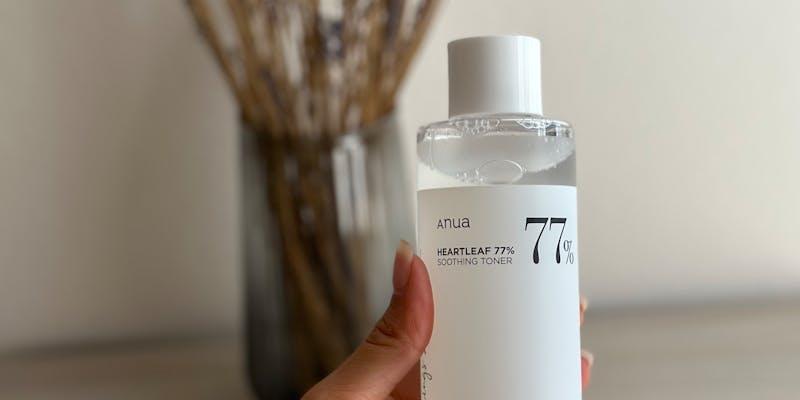Tranexamic Acid - Magic Potion For Discoloration and Uneven Skin!
Mar 14, 2024 By Madison Evans
Fixing discolorations and uneven tones is hard when you want flawless skin. Tranexamic acid might replace your skincare and restore your skin radiance. Include it in your beauty products to even out light spots and skin tone. What exactly is it, and how can it be utilized correctly? Find out in this guide.
What is Tranexamic Acid?
A synthetic protein called transaminase fights skin discoloration. In contrast to other skin lighteners, tranexamic acid blocks plasmin to avoid blood clot lysis. Tranexamic acid lightens dark spots and inhibits abnormal blood vessel growth, boosting pigmentation.
Tranexamic acid may assist the skin, but how is it crucial? Tranexamic acid diminishes plasmin, which dissolves blood clots. This inhibits abnormal blood vessel growth, which causes skin pigmentation. Tranexamic acid targets pigmentation issues, including dark patches and uneven skin tone. The tranexamic acid cost is not high like other professional treatments, hence, its widely used.
Using Tranexamic Acid Daily

Tranexamic acid can be quickly added to your day-to-day skincare regimen. Cleanse your face first using a mild cleanser and a tranexamic acid serum or lotion for trouble areas, including dark spots or hyperpigmentation. Massage the product into your skin upwards till absorbed. Next, use a moisturizer to hold the tranexamic acid and protect the skin. In the morning routine, apply sunscreen daily, as tranexamic acid could increase sun sensitivity. Consistent use will reveal a far more even complexion and easy skincare goals. Tranexamic acid might be used in AM and PM routines. Niacinamide or vitamin C might enhance the activities of tranexamic acid night treatment.
Pros and Cons of Tranexamic Acid
Have you considered using tranexamic acid in your skincare? Before stepping in, weigh the pros and cons including the tranexamic acid cost. Tranexamic acid's advantages and drawbacks for skin discoloration and uneven tone:
Pros
- Reduces dark spots and uneven skin tone.
- It decreases dark patches and hyperpigmentation.
- It has a non-invasive solution to pigment issues.
- Great for normal to sensitive skin.
- Provides long-lasting results.
Cons
- It might result in skin irritation or sensitivity for some individuals.
- Potential for more intense sun sensitivity requiring conservative sunscreen use.
- Potential interactions with various other skin care products or medicines.
- Not for use by pregnant and breastfeeding individuals with no healthcare advice.
- Results are visible only in long-term and consistent usage.
Choosing the Right Tranexamic Acid Product
Tranexamic acid appears in many skincare products. If you buy tranexamic acid, consider your skin type, problems, and objectives. Choose tranexamic acid products with a high percentage (no known irritants or allergies). Though many people tolerate tranexamic acid properly, you need to be still conscious of its potential unwanted side effects if you use it frequently or for many years. Perform a skin patch test before you use a brand-new product.
With more skin products containing tranexamic acid in the market, what should we get? Like any product, what is right could depend on your specific skin goals and considerations. Some dermatologist-recommended options are:
- SkinMedica Lytera 2.0 Pigment Correcting Serum: This particular serum has tranexamic acid containing niacinamide and retinol. It could lighten dark spots, melasma, and blemishes on your skin.
- PCA Skin Pigment Gel: It has 2% tranexamic acid, azelaic acid and kojic acid. It targets recurring pigmentation concerns, including melasma and post-inflammatory hyperpigmentation. Regular use could lighten dark spots 1and1 skin tone.
- ISDIN Melatonik 3 in 1 Night Serum includes tranexamic acid, bakuchiol, and melatonin. It works as a tranexamic acid night treatment to even skin tone, lightens dark spots, and offers radiance. The combination stops melanin production and enhances the regrowth of new skin cells.
- Skinceuticals Discoloration Defense: It has 3% tranexamic acid, kojic acid and niacinamide. It treats UV discoloration, changes in hormonal balance, and acne. Regular use could produce a far more even complexion.
The above-listed products provide various formulations and concentrations to suit many skin types and concerns. Any brand-new product of tranexamic acid reviews should be examined with a patch test and discussed with a physician or skin care specialist if you have sensitive or existing skin problems.
Other Discoloration Treatments

Several additional therapies may work to whiten the skin and decrease discoloration. Further options are listed below:
- Vitamin C serums' antioxidants lighten the complexion and decrease dark spots and hyperpigmentation. Regularly applying Vitamin C serums enhances skin tone, texture, and appearance.
- Chemical exfoliators that remove dead skin cells and also stimulate cellular turnover are alpha hydroxy acids (AHAs). Some examples are AHAs, glycolic acid, and lactic acid. Regular AHAs give you smoother, glowing skin and even your pigmentation and dark spots.
- Vitamin A offers retinoids, skincare substances that enhance skin feel, the circulatory system, and collagen formation. When used consistently, retinoids brighten dark patches and skin tone.
- If you have dark patches or acne, hydroquinone may help lighten your skin. This works by obstructing your skins melanin synthesis. However, some people may have irritation or other side effects from hydroquinone, so it may not suit all skin types.
- Extracted from some fungus, Kojic acid is a skin-lightening chemical. It reduces hyperpigmentation and black patches by blocking the skin's melanin synthesis. Cosmetics (cleansers, serums, and creams) often include Kojic acid.
- Chemical peels remove the outer layer of skin and promote collagen production. Chemical peels may correct uneven skin tone and discoloration.
Remember that different skin types and concerns might affect how well alternative therapies work. Consult your doctor or a skincare specialist before attempting new skin treatments or products. Avoid adverse reactions by following the manufacturer's instructions and doing patch tests on new items.
Conclusion
When we look at tranexamic acid reviews, it emerges as a promising component in skincare as a targeted option for apparent discoloration and irregular skin tone. It can greatly help with freckles, melasma, sunspots, and uneven skin tone. Seeking advice from a dermatologist or skin specialist can customize advice and ensure effective and safe skincare. With persistence, consistency, and sound decision-making, you can apply tranexamic acid to attain your skin care goals and expose your best skin.







